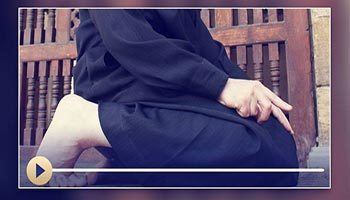🌄🌺This site includes everything about Islam 🌄🌺
1-How to pray in Islam?
2-fasting and voluntary fasting
3-zakah and its virtues
4-purification in Islam
5-pillars of Hajj and Umrah
🌄👉, help us to reach All Muslims in the whole world and share the site and if you do, please write done, may this be your way to Jannah🙌
https://www.al-feqh.com/en
#compaign_to_spread_Islam

how to pray
https://www.al-feqh.com/en/description-of-salat-islamic-prayer
Most recent stories in how to pray
1- As-Salah is the second pillar of the five pillars of Islam
The Prophet ﷺ, said: “Islam is built upon five pillars: Witnessing that there is no god but Allah and that Muhammad is His servant and Messenger, and establishing the prayer…” [ Agreed upon.]
2- As-Salah is the best of actions
The Prophet ﷺsaid: “The best of actions is the prayer early in its time.” [ Source: At-Tirmidhi.]
3- As-Salah is the line between Islam and Kufr (disbelief).
The Prophet ﷺ said: “Indeed between a man, and shirk and Kufr, is abandoning the prayer.” [ Source: Muslim.]
4- The foundation of Islam is built on As-Salat and At-Tawheed (worshipping only Allah, alone).
The Prophet ﷺ said: “The head of this affair is Islam and its support is Salah .” [ Source: Ahmad.]
source: https://www.al-feqh.com/en/pillars-of-salah-and-their-rulingsTypes of Supererogatory Salat
Supererogatory Salat are numerous, some of the most important of these include:
First: Routine supererogatory Salat prayed with the obligatory Salat (As-Sunan ar-Rawatib)[ Ar-Rawatib: The plural of ratibah which is anything that is established and permanent.]
They are the prayers observed before or after obligatory prayers. The total number of these supererogatory Salat is ten or twelve raka’at, and they are:
- Two raka’at before Fajr
- Two or four raka’at before Dhuhr
- Two raka’at after Dhuhr
- Two raka’at after Maghrib
- Two raka’at after ‘Isha’
On the authority of Ibn ‘Umar , who said: “I learnt from the Prophet ﷺ ten raka’at: Two raka’at before Dhuhr prayer and two raka’at after it, two raka’at after Maghrib, in his house, two raka’at after ‘Isha’ in his house, and two raka’at before Salat Subhi.” [ Agreed upon.] A similar narration was also authentically reported from A’ishah ( may Allah be pleased with her), except that she mentioned four raka’at before Dhuhr (not two). [ Source: Muslim.]
source: https://www.al-feqh.com/en/supererogatory-salatThe prayer(Salat) times are:
1- Time for Fajr (dawn) prayer:
From the appearance of the true dawn - the whiteness (white light) that appears from the direction of the east - until when the sun rises.
2- Time for Dhur (noon) prayer:
From when the sun moves away from the meridian (post meridiem) until when the shadow of an object is up to its length, (i.e. this shadow is) after the first shadow cast by the sun before it changes direction away from the meridian. This is because every object casts its shadow towards the west and this diminishes continuously as the sun rises. Eventually the shadow seizes to diminish and thereafter starts to increase in length (elongate). The time when this elongation starts marks the midday (meridiem).
3- Time for ‘Asr prayer:
From the end of the time of Dhur prayer until when the shadow of an object doubles its height (length), (i.e. this shadow is) after the first shadow cast by the sun before it changes direction away from the meridian.
4- Time for Maghrib (sunset) prayer:
From the sunset until when the red glow disappears. The red glow is the red light which appears at the horizon during the course of the sun setting.
5- Time for ‘Isha prayer:
From the end of Maghrib’s time until the middle of the night, since the Prophet ﷺ said: “…the time of Salat ul-‘Isha extends to the middle of the night.” [ Source: Muslim.]
However, in this day and age the prayer times can be known easily through the use of prayer calendars.
source: https://www.al-feqh.com/en/conditions-of-the-validity-of-salatDefinition of the Adhan and the Iqamah
The Adhan
Announcement of the beginning of a certain time, during the day or night, pertaining to a particular prayer, by means of specific invocations.
The Iqamah
Announcement of the commencement of prayer with specific invocations.
The Rulings of the Adhan and the Iqamah
1- With Regards to the Congregation
The adhan and the iqamah are fardh al-kifiyah[ The definition of the responsibility of fardh al-kifayah in Islam is: the obligation which when fulfilled by one part of the Muslim community prevents the sin of failing to do so from falling on the rest of the Muslim community.] (a collective responsibility) for the Muslimeen, but only for the five compulsory prayers.
This is the case when they are at home or on a journey, because both of them are open symbols of Islam. Therefore, it is prohibited to forsake or ignore them. The Prophet ﷺ said: “And when Salah approaches, let someone among you make the call to prayer for you, then let the oldest among you lead (the prayer).” [ Agreed upon.]
2- With Regards to the Solitary Individual
It is a Sunnah, as Uqbah ibn Aamir t, said: “I heard the Messenger of Allah ﷺ saying: “Your Lord is amazed at a goat shepherd at the peak of a mountain[ The midst of mountain peaks] who calls the adhan and prays. Allah says, ‘Look at this servant of mine, he proclaims the call to prayer, announces the commencement of prayer and then prays, fearing Me. I have forgiven him all of his sins.” [ Source: An-Nasa’i.]
The Wisdom Behind the Adhan
1- Announcement of the beginning of the time for the particular prayer and the place to observe it.
2- It urges people to perform congregational prayer.
3- Notifying the unmindful and reminding the forgetful to observe As-Salah, which is one of the best graces.
source: https://www.al-feqh.com/en/the-adhan-and-the-iqamah







